|
Christian
Media
Communiqué
THE MATTER OF THE MINGLING
Part VIII - FINALE

In examining the sequence showing how the Bible predicts the universal process seen in the attempt to mingle the Spirit of God with the seed of men, we find a mysterious formula which is clearly supernaturally engineered. As the Scriptures detail, in the initial example of the Fallen Angels mingling their angelic seed with the seed of men, the resulting hybridized offspring led the world to ruin, as the LORD was compelled to intervene with the flood of Noah.
"When the sons of God [the Nephilim fallen angels] came in unto the daughters of men, and they bare children to them, the same became mighty men which were of old, men of renown" (Genesis 6:4).
The intervention of the Fallen Angels radically accelerated the destructive cycle of earthly political development, to the degree the LORD determined to sharply reset the cycle through the massive flood. By preserving eight lives in the Arc of Noah (even as He destroyed those that dwelled on the earth), God set back the Nephilim originated scheme to plant the seeds of mankind's ruin through the original mingling.
"And God saw that the wickedness of man was great in the earth, and that every imagination of the thoughts of his heart was only evil continually. And the Lord said, I will destroy man whom I have created from the face of the earth" (Genesis 6:5, 7).
After the fall, we see this strange phenomenon of mingling the LORD's spirit with human ambition is universal -- for just as man was beginning to recover from the great flood, he resumed his unholy drive to build a world apart from God, as seen in the Tower of Babel account.
"And the Lord said, Behold, the [seed of men are unified] and they have all one language…and now nothing will be restrained from them, which they have imagined to do" (Genesis 11:6).
Indeed, the same pattern occurred after the LORD punished Israel centuries later, for once He relented from scattering his chosen, He allowed them yet another period of grace in which they were able to rebuild their temple after the Babylonians had destroyed it. Lest we forget, in the time of Nehemiah, the Israelites again blatantly violated the Lord's directive, and mingled their "holy seed" with the people of the land. After discovering this mingling, Ezra the priest agonized over the infraction.
"I fell upon my knees …and said, O my God, I am ashamed and blush to lift up my face to thee my God: for our iniquities are increased over our head, and our trespass has grown up into the heavens….for our iniquities have we, our kings, and our priests, been delivered into the hand of the kings of the lands, to the sword, to captivity, and to a spoil…and now for a little space grace hath been shewed from the Lord our God to leave us a remnant to escape"
"Then were assembled unto me every one that trembled at the words of the God of Israel…[and I said] Now therefore [mingle] not your daughters [with] their sons, neither [mingle] their daughters [with] your sons, nor seek their peace or their wealth for ever: that ye may be strong…And after all that…seeing that our God hast punished us less than our iniquities deserve…should we again…join in affinity with the people of these abominations?" (Ezra 9:5-8, 4, 12-14).
We have rehearsed the particulars of the account in Daniel, where another mingling is mentioned, and it is clear this phenomenon occurs at some point after the inauguration of the New Covenant. A major thrust of the passage is the timing of the arrival of the Kingdom of God, which coincides with the Roman Empire and the incarnation of Jesus Christ. As the text speaks of a nebulous "they" (which is obviously not an ordinary group), in that when "they" attempt to mingle with "the seed of men," the inference is that "they" are not of the seed of men – i.e. not ordinary human beings.
"And whereas thou sawest iron mixed with miry clay, they shall mingle themselves with the seed of men: but they shall not cleave one to another, even as iron is not mixed with clay" (Daniel 2:43).
Since the Nephilim qualify as a "they" who mingled their spiritual seed with the daughters of men, many believe this to be a reference to another attempt on the part of the Fallen Ones (the literal transliteration of the Hebrew term Nephilim) to recapitulate the egregious effort referred to in Genesis 6, as well as portions of the New Testament. The episode was obviously well known, for the Apostle Peter mentioned it.
"God spared not the angels that sinned, but cast them down to hell, and delivered them into chains of darkness, to be reserved unto judgment" (II Peter 2:4).
Further, the Nephilim episode is recorded in Scripture as occurring during the generation of Noah, and since Jesus described the days of His second coming as analogous to the days of Noah, we can see how the idea of a return of the Nephilim is plausible. It is self evident the Christian disciples understood that it was unnatural for the angelic sons of God to mingle with the daughters of men, for the letter to Jude compares the attempt to mingle two different types, to the homosexuality which the cities of Sodom and Gomorrah were known for. After mentioning the mingling of the Fallen Ones and human women, the Apostle Paul said this mingling was
"Even as Sodom and Gomorrah…[which gave] themselves over to fornication, and going after strange flesh…[which was a sin] in like manner…" (Jude 1:6).
In other words, angels were not created to be with human women, just as men were not designed to copulate with other men. We see the same juxtaposition between the sacred and the profane, when "the holy seed" of Israel, was mingled with the Gentile people of the land, in Ezra's account.
"The people of Israel, and the priest, and the Levites…have taken of [the Gentile's] daughters for themselves, and for their sons: so that the holy seed have mingled themselves with the people of those lands" (Ezra 9:1, 2).
With these contrasts, God is exhibiting the holy nature He expects us to abide in, and since the believers have become so timid for the sake of social concord (with a particular fear of being called hateful if we tell the truth about the despicable nature of the seed of men), our error is in the same class as that of the devils. In other words, it doesn't get much worse than this.
These Scriptures indicate the severity of this dreadful sin, and since our previous chapters have shown that the supernatural "they" who seek to mingle with unregenerate people (the "seed of men" in the text) are the Christians, who the LORD now calls the sons of God, we have an indication of just what an abomination this prophesied mingling actually is. In this regard, the contemporary Christian effort to justify our beliefs to the rest of the world, is part of the prophesied Snare which has always been scheduled to come upon the entire world.
On at least one level, the effort to mingle the Spiritual Seed of God which is in us (as the born again sons of God) is fulfilled by the "believers" who claim that Christ rejecting physical Jews (who are actually "the seed of men" because they are not born again), are still the chosen people. In fact, the ancient heresy where the oxymoronic "Pharisees which believed" (Acts 15:5) tried to tell the Christians of Gentile descent, that they must follow the Old Testament laws of Moses, occurs twice in history (thereby mingling the Old and New Covenants) – the first time in the Apostolic age (where they were vehemently opposed by the Apostle Paul) – and the second time in our generation in the so called Hebrew Roots movement.
This is evidenced by the fact that the seven churches in Revelation, which represent seven eras in Christian history (among other things), have two different periods where a people falsely representing themselves as the chosen people are reproached. These two periods are towards the front end of the sequential list, and again towards the back end. Further, they are symmetrical in that the initial effort occurs just after the first church, and the second attempt occurs just before the last church.
"Unto the angel of the church in Smyrna write…I know the blasphemy of them which say they are Jews, and are not, but are the synagogue of Satan" (Revelation 2:8, 9).
"And to the angel of the church in Philadelphia write…Behold, I will make them of the synagogue of Satan, which say they are Jews, and are not, but do lie; behold, I will make them to come and worship before thy feet, and to know that I have loved thee" (Revelation 3:7, 9).
Although several false prophets in multiple sectarian groups tell us these verses regarding false Jews apply to a people who are ethnic pretenders, the passages refer to the fact the New Testament clearly tells us the only genuine Jewish person is one who is Spiritually regenerated in Christ, and those who rely on the Old Covenant law after the time when "Jesus Christ is come in the flesh" (II John 1:7), are no longer Jews at all.
"For he is not a Jew, which is one outwardly; neither is….circumcision [valid anymore], which is outward in the flesh: But he is a Jew, which is one inwardly; and [his] circumcision is that of the heart, in the spirit" (Romans 2:28, 29).
There is even more supernatural symmetry to the mingling, as in the case of the mingling in Genesis, where we see the Fallen Sons of God exported their Spiritual evil into the flesh. In the Christian era, the iniquity which is resident in the flesh is imported into the Spirit which is now found in the Redeemed Sons of God.
However, there is yet another dimension to the Christian era mingling, and it is the reason the Spirit (seen in the redeemed clay), and the Flesh (seen in the iron in Daniel 2) "shall not cleave one to another" (Daniel 2:43).
Under the Old Covenant, Israel continually turned against God, were punished for it, and then the LORD would labor to draw the nation back to Himself. When God purposed to create a new covenant with Israel, He described it in His promise to King David, in which He indicated this time His salvation would not be based on works, or conformity to the laws of Moses, but on an inner Spiritual repentance which God Himself would provide through the Son of David.
This "Son of David" would be physically descended from David, and He shall "build an house for my name" – the Spiritual temple of God, which Christ constructs when He draws us to the Father, in the heavenly realm.
"I will be his father, and he shall be my son" (II Samuel 7:14).
At that point, the description broadens to the Redeemed Sons of God – those who are joined to Christ through Spiritual rebirth in Him – and we learn of a crucial difference found in the grace which is the premiere feature of the New Covenant with Spiritual Israel.
"If he [read they] commit iniquity, I will chasten him with the rod of men, and with the stripes of the children of men: But my mercy shall not depart away from him, as I took it from [King] Saul, whom I put away before thee. And thine house and thy kingdom shall be established for ever before thee: thy throne shall be established for ever" (II Samuel 7:14-16).
Even under the New Covenant, our flesh and blood man (whether physical Hebrew or fleshly Gentile) seeks His own way – but God is faithful to guide us back to Him in the Spirit. The Apostle Paul writes that even though he is born again, he is still carnal, and those things he desires to do, he finds he does not do – even as those things he desires not to do, he still does.
"For that which I [know to do] I allow not…but what I hate, that do I. For I know that in me (that is, in my flesh), dwelleth no good thing: O wretched man that I am! Who shall deliver me from the body of this death?" (Romans 7:15).
"For what the law [of Moses] could not do, in that it was weak through the flesh, God sending his own Son in the likeness of sinful flesh, and for sin, condemned sin in the flesh. For they that are after the flesh do mind the things of the flesh; but they that are after the Spirit the things of the Spirit" (Romans 8:3, 5).
If we look at every born again person, we learn that we exist in the realm of the Spirit in Christ, where we are now seated in Him, in the heavenlies at the right hand of the Father. Simultaneously, we exist in the temporal dimension of flesh and blood, where the sin which still exists in the flesh constantly tries to pull us back to dwell in the world. Whether we were physical Gentiles ("which were afar off") or ethnic Jews ("them that were nigh" – Ephesians 2:18), we are reconciled to God through the Spirit.
This is the ultimate Matter Of the Mingling, it's going on even as you read these words, and it tells us why the Spirit does not cleave to the flesh. As the prophet tells us, after we are born again in Jesus Christ in the Spirit…
"….[we] shall mingle [our Spiritual selves] with the seed of men [our flesh and blood man], but they shall not cleave one to another, even as iron is not mixed with clay" (Daniel 2:43).
- James Lloyd
___________________________________
|

Charlie

Great and Marvelous

Stealth Dispensationalism

Gene Autry-Doja Cat

The Baal Bible

The Revolutionary Role Reversal

Ten Kings

Image Of The Beast

Something

Deadly Wound

You're In The Army Now

The Remnant Of Israel

Kingdom Within You

Jesus IS

New Heart From Heaven

Rivers Of Babylon

One Night Town

Centuries

Whore Of Babylon

Crazy

Get Away

Turn Up The Radio

I Hear You Knocking

Circle Of Friends
|
|
Click here to make CMTV your
homepage
Christian Media Network Catalog
Also from James Lloyd
|
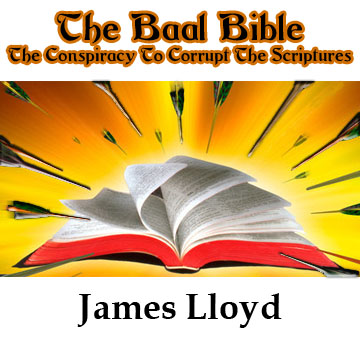
The Baal Bible DVD
James Lloyd summarizes the role of the heathen "scriptures" from Mesopotamia, which the scholars are using to leaven the genuine Word of God. In what he has dubbed the "Baal Bible," these Gentile writings speak of the Creation, the Garden episode, and the Great Flood, even as they glorify Baal. Part of a much larger conspiracy, since these Satanic records provide a distorted version of Genesis, the faulty dating of the scholars has conned Christian leaders into telling us the Baal Bible is the original, and the Hebrew Scriptures are the copy!
Details Here!
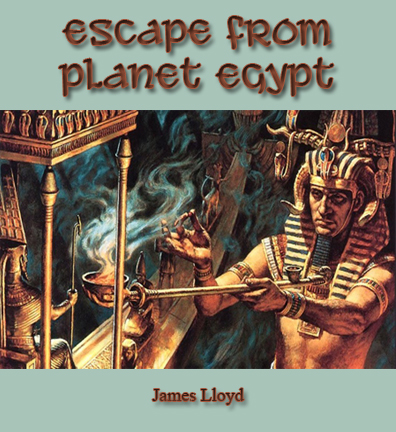
Escape From Planet Egypt
This new book is the electrifying story of how the Spirit of Antichrist has deceived the scholars into believing the Occult material from ancient Gentile writings generated the growing belief in the Divine Council heresy. James Lloyd's earlier book, Dead Men's Bones, provided a Scriptural refutation of the doctrine that claims the LORD directs a "council" of lesser gods, fallen angels, and heavenly beings.
Details Here!
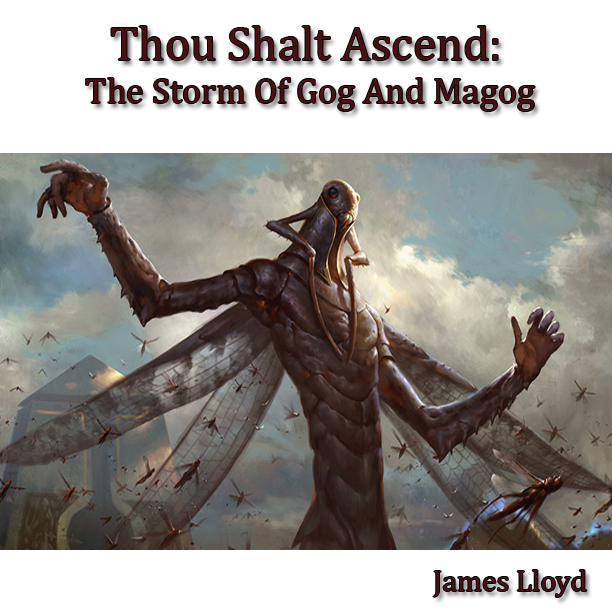
Thou Shalt Ascend:
The Storm Of Gog and Magog
Thou Shalt Ascend details the amazing reality of how the devils came to battle JESUS CHRIST at the entrance of the kingdom of God. In the new Christian Media DVD, Thou Shalt Ascend: The Storm Of Gog and Magog, James Lloyd shows how the fabled Gog and Magog Prophecies show a deeper Spiritual layer of the military conflict at the end of the age, as they actually describe the war in heaven (Revelation 12:7), when the dragon (and his Angelic Rebel Coalition) is cast out of heaven.
Details Here!

The 5th Dynasty
Related to the concept of Twin Timelines in which sequential episodes occur more than once in Scripture and History, this DVD looks at the rebellions against Moses in the Wilderness. Recognizing the failed revolt in Numbers 16, in which Korah and his followers died trying to overthrow Moses, the same thing occurred in 1649 AD as a parallel Christian rebellion tried to seize the throne of England for Christ. Known as the 5th Monarchy, James Lloyd connects this historical event with the 5th Dynasty of Israel, led by Jehu in I Kings 19:16.
Details Here!
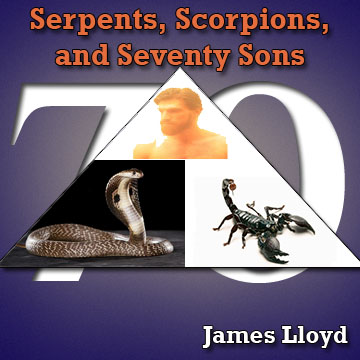
Serpents, Scorpions, And Seventy Sons
Another new DVD from James Lloyd, Serpents, Scorpions, and Seventy Sons is 2 hours of dynamite video, derived from the TV program The Apocalypse Chronicles. Using the Scriptural record, James shows how the number 70 was related to the LORD's election of Israel, as
His mediator to the Gentiles. The number is based on the presence of the children of Israel in Egypt, and this study shows how it symbolizes God's redemptive process, as Israel was chosen as "a light to the Gentiles"
(Isaiah 49:6).
Details Here!
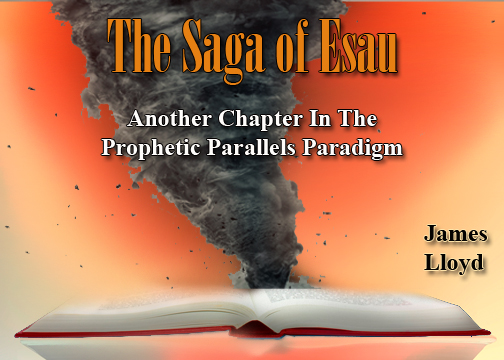
The Saga Of Esau
Distilling Esau's behavioural patterns down to two themes related to how he despised the will of the LORD, and assigned blame to innocents whom he purposed to kill, James shows how The Saga of Esau is echoed in the Edomites, King Herod, the religious council of the Jewish leadership which rejected Christ, and even Antichrist and the False Prophet.
Details Here!
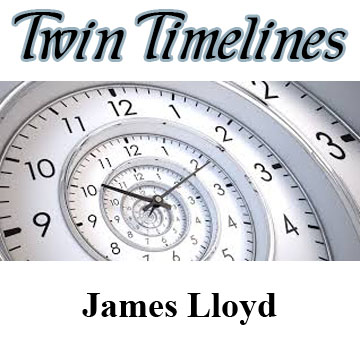
Twin Timelines DVD
Tying the various events of the presidential campaign (and the first 9 months of the Trump presidency) to what we call the Prophetic Parallels, this amazing new DVD features James detailing the entire cycle of the Twin Timelines – including predictions of where we go from here.
Details Here!

Dead Men's Bones DVD
A 2 hour DVD in which James Lloyd refutes the false doctrine of the Divine Council Paradigm. Spreading like wildfire, prophecy teachers are claiming God turned over the Gentiles (at the Tower of Babel) to a "council" of angels and the false "gods" of the Gentiles. The heresy is based on heathen manuscripts praising Baal and, incredibly, many Christian scholars are claiming certain Old Testament verses were derived from writings dedicated to Baal!
Details Here!
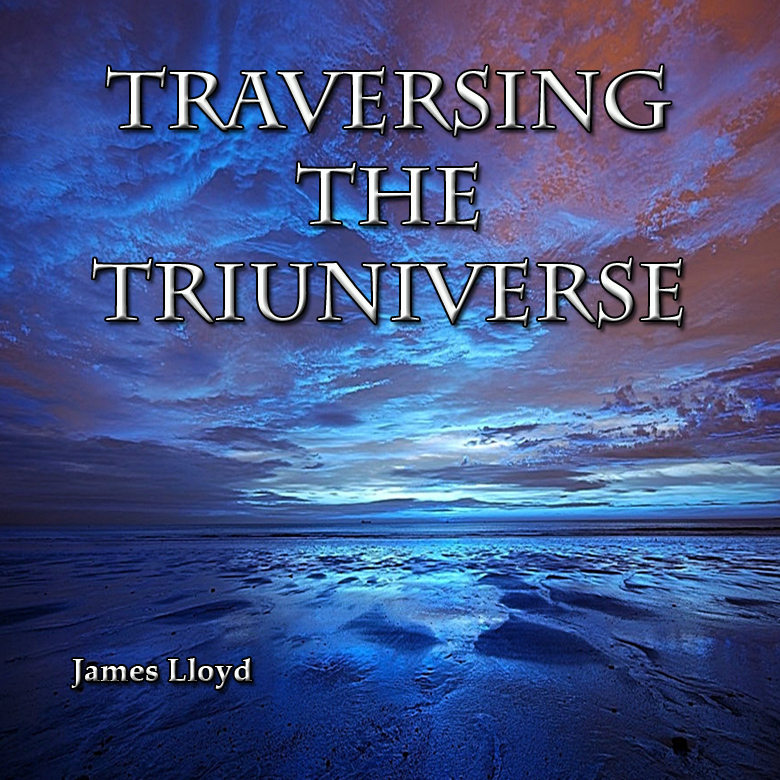
Traversing The Triuniverse
Traversing The Triuniverse is a unique new studio audio narrative from James Lloyd. Based on the article of the same name, James reviews the twin timelines concept, which has been previously examined, wherein the New Testament events parallel the Old Testament sequences. Now, in Traversing The Triuniverse, he takes the prophetic parallels a step further, showing how the Spiritual fulfillment is the substance, but the physical timeline, inhabited by the Spirit of Antichrist, which is the shadow, takes the same sequence, and reverses the roles.
Video Here!
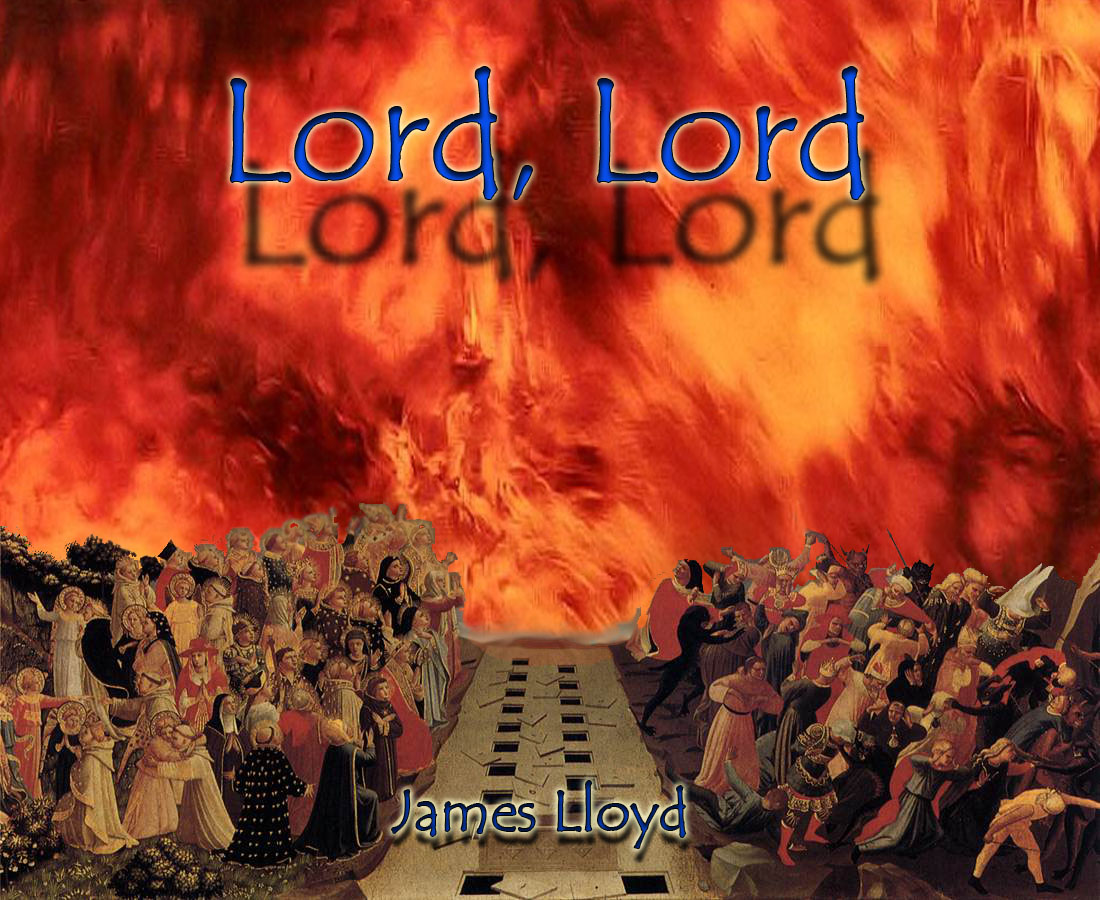
Lord, Lord
Those famous words, familiar to Christians reading the New Testament, are spoken at the time of judgment, when the Bible says MANY will be turned away. Most believers are also aware of the ominous response in which Christ tells this "many" to depart from Him, as He never knew them.
Details Here!

A Light To The Nations - Book
This book includes the astonishing prophetic metaphor where Jonah, symbolizing Old Covenant Israel, resists the call to prophesy to the Gentiles, and sails to Europe to escape the LORD's will. Swallowed up in symbolic Death – and then deposited back onto the land, where the Christ rejecting state re-emerges in 1948 as an involuntary witness, Jonah is an important figure in prophecy. Meanwhile, true Spiritual Israel is seen passing through the sea, walking in the will of the LORD, at the Exodus, even as the earthdwellers (the Egyptian host in the text) are destroyed.
Details Here!
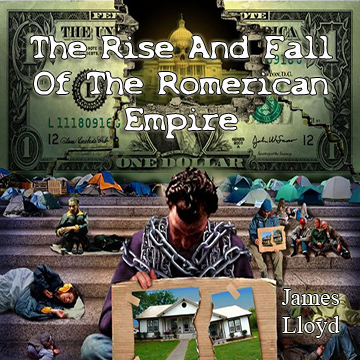
The Rise And Fall Of The Romerican Empire - Book
In this amazing book, James brings together all the components of prophecy, including the Prophetic Parallels, the 6, 7, 8 Cycle, the Beast That Was sequence, the Little Horn, and the Twin Timelines of Bible Prophecy. Integrating these modularized phenomena into a seamless whole, The Rise and Fall Of The Romerican Empire deciphers Bible Prophecy in an unprecedented fashion.
The identity of Antichrist is again revealed in this work, as well as clearly showing where we are now in the prophesied sequence of events. His largest book in 20 years, the Rise and Fall Of The Romerican Empire is the definitive work which systematically presents the truth of Remnant theology.
Details Here!
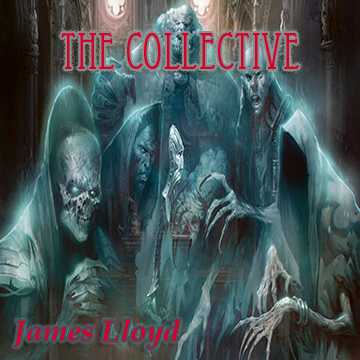
The Collective - Book
This book details how the Spiritual entity is essentially the opposite of the body of Christ. Symbolically articulated in the book of Revelation as the Image of the Beast, the Spiritual formation could also be described as the body of Antichrist. This polarity places the body of Christ on one end of the Spiritual spectrum, and the body of Antichrist on the other.
Details Here!
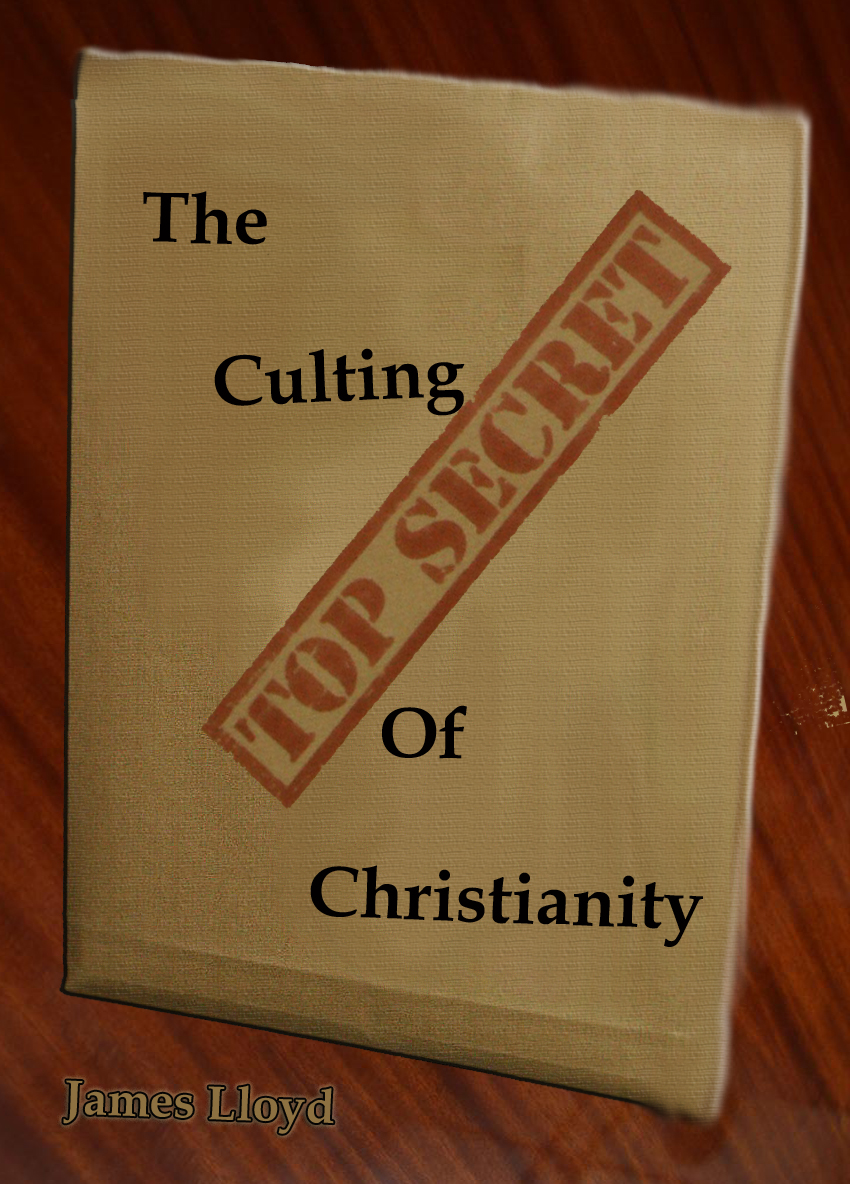
The Culting Of Christianity - Book
The Culting Of Christianity links Egyptian mysticism to leaders in the early church, as well as Jewish opponents of Christianity.
An incendiary breakthrough, James conclusively shows the idea of a pre-tribulational evacuation was written in religious documents before Jesus was born. And it doesn't stop there, as James tracks how Occultic writings influenced the development of early Christian doctrine.
Details Here!
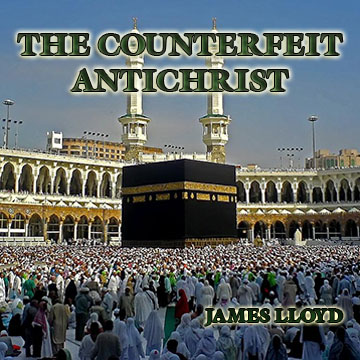
The Counterfeit Antichrist
The first new DVD from James Lloyd in several years, this 2 hour TV program examines the rapidly growing idea the appearance of "the" Antichrist will be tied to the prophesied Moslem saviour figure known as The Mahdi.
Many Christian preachers and prophecy authors are now embracing a variation on the ancient "revived Roman Empire" lie with a scenario in which the end times "Antichrist" arrives as a powerful leader from the Islamic world. Leaning on Islamic prophecy itself, in the process of presenting their case in books, television programs, and speaking engagements, these false prophets are pitching another gospel (II Corinthians 11:4) which fails to recognize the truth about the Spiritual entities – commonly identified as Antichrist and The False Prophet -- found in Revelation.
Video Here!
|
The Christian Media Ministry makes our materials available through gifts made to the ministry. When you help Christian Media, we reciprocate with the materials in which you've indicated an interest. Supporters of our ministry do so because they believe in the message the LORD has given us, and we seek to follow the Spiritual directive which Christ gave to the Apostle Peter, in that we seek to feed His sheep. This constitutes a contract, in that gifts we receive indicate a willingness to be instructed in the things of the LORD, as the supporting gifts we receive from the body of Christ allow us to continue in the mission He has called us to.
Help row the CMN boat
Click on the oar
to donate with Paypal
Online CM Fellowship
For Remnant Believers
To join
send an email to
JamesLloyd@mediachristianman.com
Volunteer Programs
- If you'd like to serve the cause of Christ, we have
Internet volunteer programs in place - just email James Lloyd at
the above address
|

















